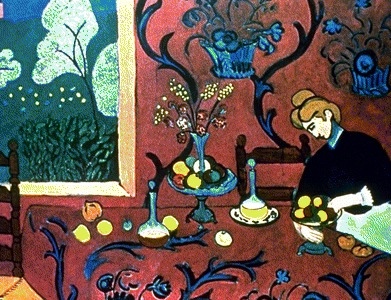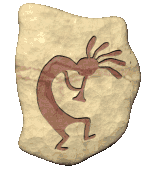
welcome to art history
Here The Muse Of Fine Arts explores the history of the fine arts.
About Art history
The history of the fine arts goes back thousands of years, to the cave
paintings at 17,000 year old places like Pech Merle or Lascaux Cave in the Dordogne in southern France, to 30,000-year-old religious
artifacts, to the 32,000 year old paintings on the walls of Chauvet Cave
near Vallon-Pont-d'Arc in southern France, and before. Art artifacts produced
by ancient man have been discovered all over the world, going back to the
stone age. It is fair to conjecture that The Muse has inspired mankind for
as long as mankind has existed.
A new technique for dating rock art sites called uranium-series
disequilibrium dating, or more
simply, uranium-series dating, is pushing back our current understanding of
their true age when compared with the less accurate estimates derived from
traditional carbon dating techniques. Archeologists using uranium-series
dating are finding that the earliest cave paintings they are now examining
in Western Europe reach as far back as at least 40,800 years. When existing
estimates for art in caves like Altamira and Lascaux are revised with the
new technique, it's likely that our estimates of their age will be elevated,
as well.
In this feature, The Muse explores this history from the perspective of
the arts and the artifacts that have been produced. Broadly conceived, The Muse has divided this treatment of the history of
the fine arts into these dimensions, factors, or perspectives:
- Time.
- Geography.
- Genre (painting, sculpture, etc.)
- Medium (gouache, oils, etc.)
the Muse clio and the history of western art
By no means does fine art begin and end with Western art. Many great art
traditions began in and continue in the East; Oriental, East Indian, Mayan,
African, Australian Aboriginal, Amerindian, pre-historic, and other arts
genres and eras are among the
finest outpourings of the human spirit.
However, it is with the Western Art
tradition that The Muse Of Fine Arts has chosen to begin exploring the
history of Fine Art. Why
For one thing, everything has to start somewhere. But the more important
and less obvious reason for The Muse's choice is Clio. The Muse Of Fine Arts has chosen to begin
this exploration of the Fine Arts with art of the Western World because of
her.
Begin now
And now, The Muse Of Fine Arts invites you to share this adventure. Begin
by exploring an overview of the art history of the Western Tradition.
- Visit The Muse Of Fine Arts page called Capsule History Of Western
Art:
click here.
the Fine Arts Glossary
The Muse Of Fine Arts is pleased to offer this automated glossary of fine
arts terminology. It's a bounty of basic
information about the fine arts which it presents in a simple, direct, and
clear manner. It contains over 500 important terms drawn
from a variety of the fine arts, with definitions that are packed with
interesting and informative content.
- First visit the page called the Fine Arts Glossary, where the glossary
is explained. From there, visit the Glossary and look up fine arts words
'til you bust!
click here.
technical aspects of the fine arts
In their classical definition, the fields of fine art are primarily
visual; they include painting, sculpture, drawing, watercolor,
graphics, and architecture. Yet today there are more kinds
of fine art than every before, many of which mitigate or completely
dissolve barriers that in the past restricted the sensory appeal of
fine art to the eyes at the expense of the other four senses.
- Learn more! Explore the fine arts from a technical point of view:
click here.
ETAF recommends
There are many, many fine books on the history of art.
...Coming.
|
www.Electricka.com
This web site and
its contents are copyrighted by
Decision Consulting Incorporated (DCI).
All rights reserved.
You may reproduce this page for your personal
use or for non-commercial distribution. All copies must include this
copyright statement.
—Additional
copyright and trademark notices— |
| 




